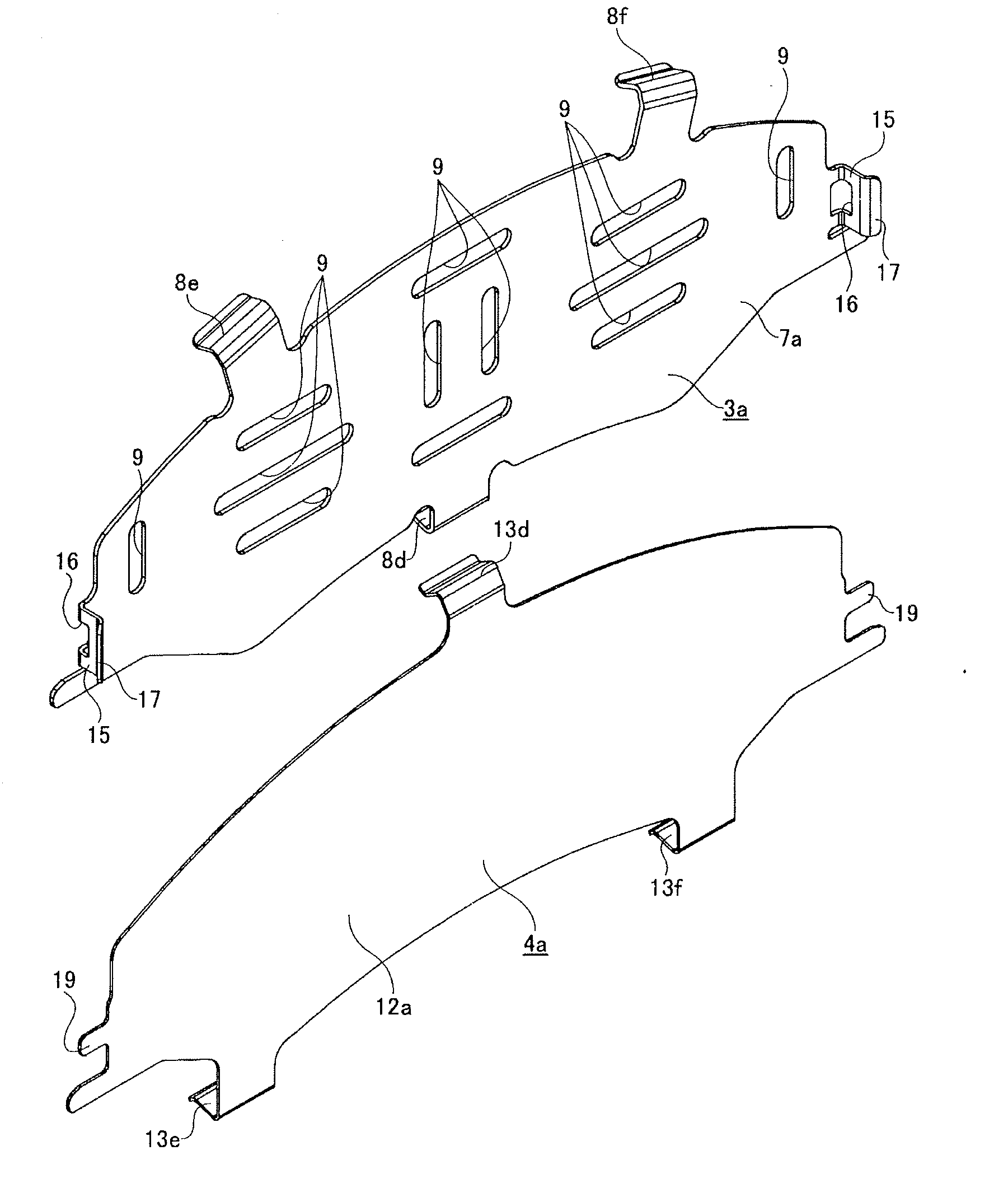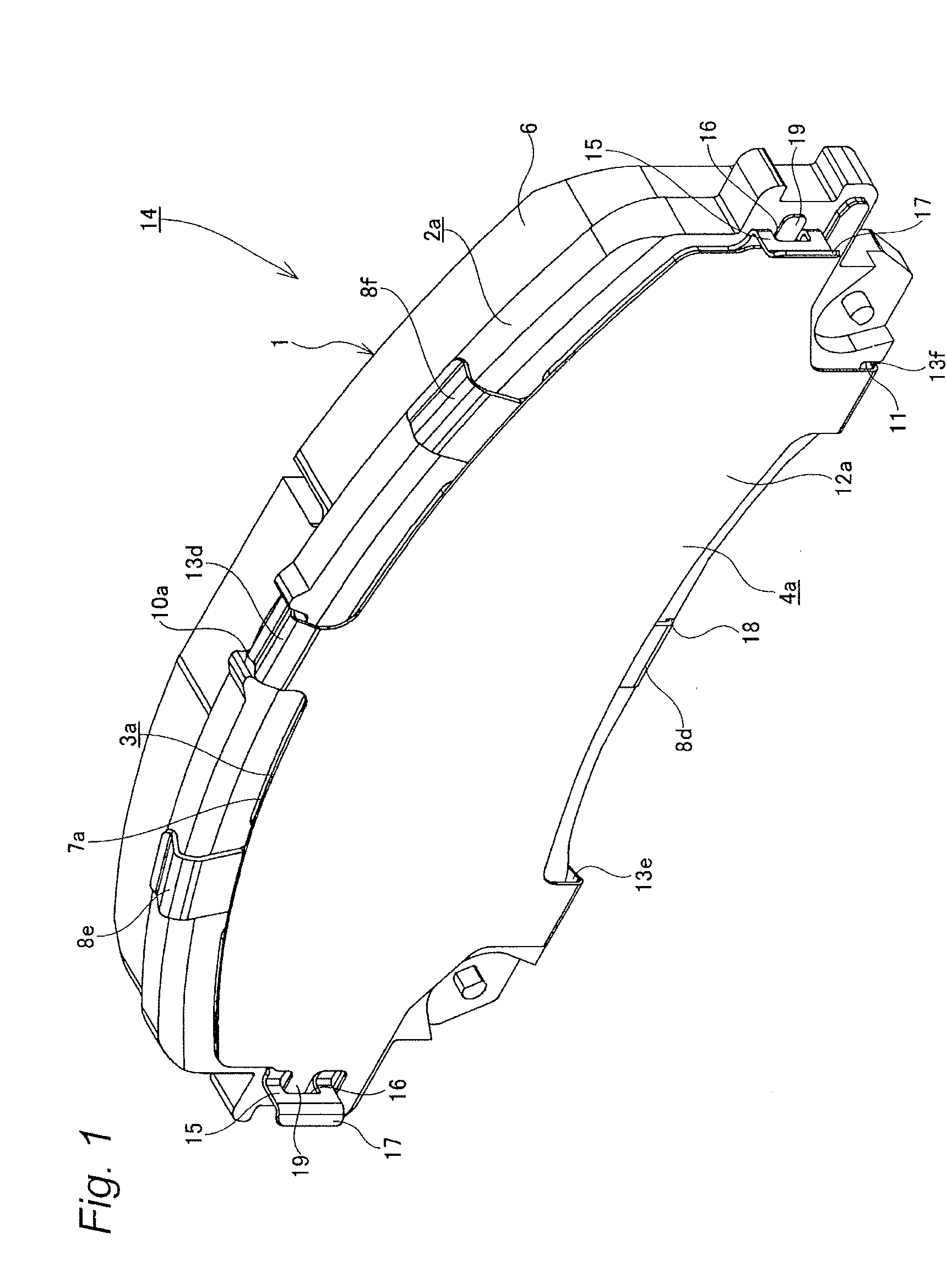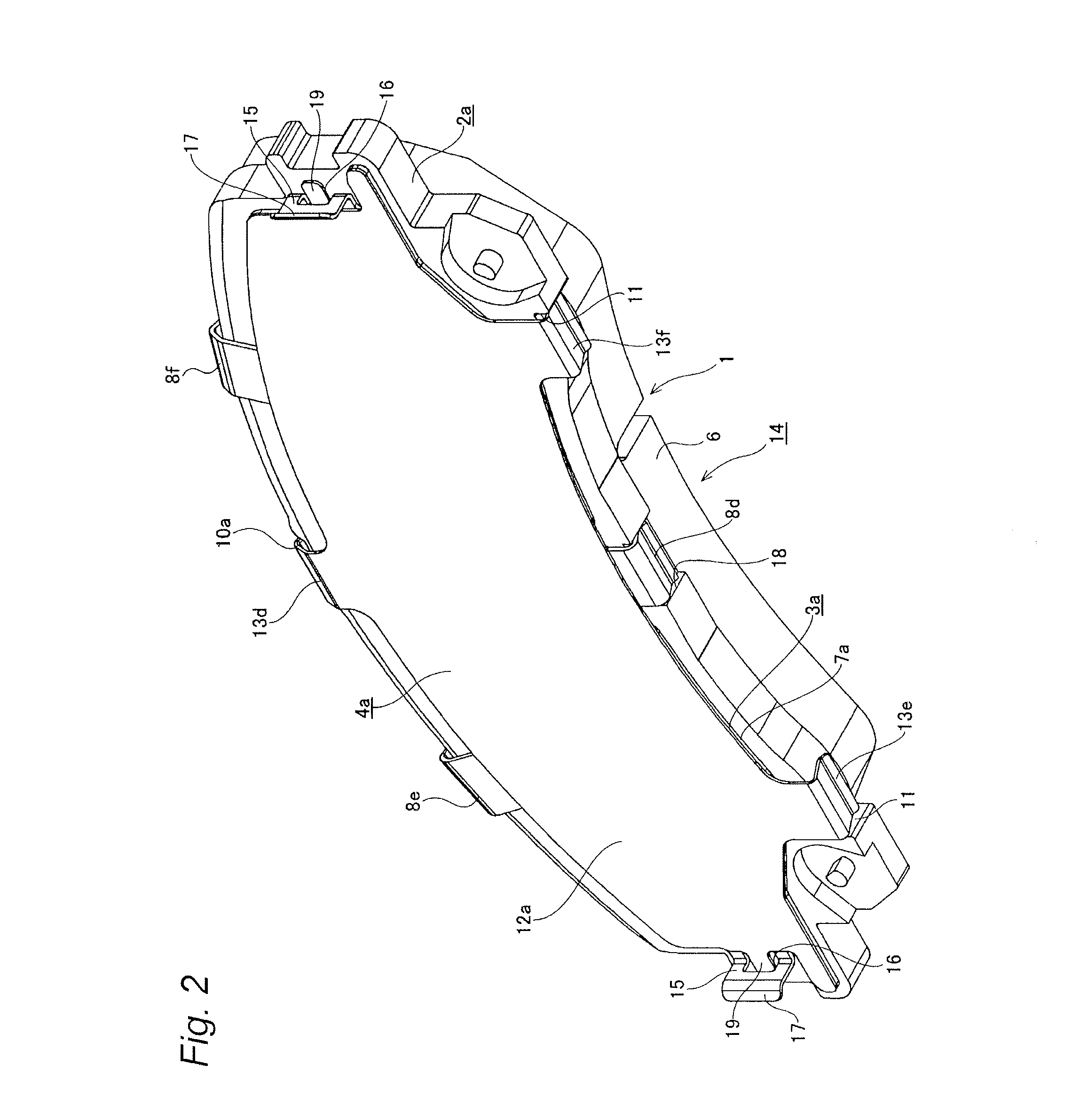Disc brake pad assembly
a technology of disc brake pads and assembly parts, which is applied in the direction of braking components, noise/vibration control, braking elements, etc., can solve the problems of uneven orientation of both pads, easy to observe the degree of partial wear of the lining, and unstable orientation of both pads. to achieve the effect of suppressing the projection of a pad
- Summary
- Abstract
- Description
- Claims
- Application Information
AI Technical Summary
Benefits of technology
Problems solved by technology
Method used
Image
Examples
Embodiment Construction
[0042]FIGS. 1 to 12 show an embodiment of a disc brake pad assembly according to the invention which corresponds to the configurations described under (1) to (5) above. A disc brake pad assembly 14 according to the embodiment includes a pad 1, an inner shim plate 3a, and an outer shim plate 4a.
[0043]The pad 1 has a lining 6 which is additionally fixed to a front surface of a pressure plate 2 and is disposed at a portion which faces an axial side surface of a rotor, not shown. A locking recess portion 10a is formed in a circumferential central portion of a radially outward circumferential edge portion of the pressure plate 2a, and a pair of step portions 11, 11 are formed at portions which lie close to both circumferential ends of a radially inward edge portion.
[0044]Additionally, the inner shim plate 3a is fabricated by press stamping and bending a corrosion-resistant and elastic metallic plate including a stainless spring steel plate, a stainless spring steel plate in which rubber...
PUM
 Login to View More
Login to View More Abstract
Description
Claims
Application Information
 Login to View More
Login to View More - R&D
- Intellectual Property
- Life Sciences
- Materials
- Tech Scout
- Unparalleled Data Quality
- Higher Quality Content
- 60% Fewer Hallucinations
Browse by: Latest US Patents, China's latest patents, Technical Efficacy Thesaurus, Application Domain, Technology Topic, Popular Technical Reports.
© 2025 PatSnap. All rights reserved.Legal|Privacy policy|Modern Slavery Act Transparency Statement|Sitemap|About US| Contact US: help@patsnap.com



